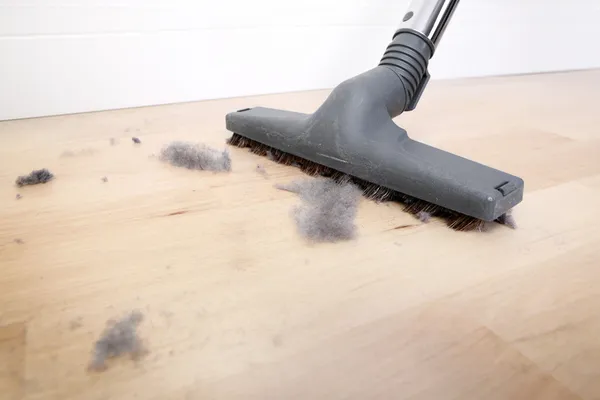When it comes to keeping your workplace safe, dust might not be the first thing that comes to mind. But here’s the reality—dust can be a serious hazard in many work environments, from industrial workshops to manufacturing plants. If you’re not paying attention to dust levels, you could be putting your team at risk.
Contents
What Happens When Dust Builds Up?
You’ve likely seen dust gathering on shelves and surfaces at home. Now imagine that same dust, but in a workspace filled with machines, people, and processes happening at all hours. The accumulation of dust can do more harm than just looking untidy. In fact, here are a few ways dust can create serious issues if left unchecked:
- Health Hazards – Breathing in dust particles, especially fine dust, can lead to respiratory problems. Prolonged exposure to dust in the air can cause chronic health issues, including asthma, lung diseases, and even cancer in extreme cases. Certain types of dust, like those from wood or chemicals, are particularly dangerous.
- Explosion Risks – Certain dust particles are highly flammable. In industrial settings, combustible dust from wood, metals, and even food products can lead to fires and explosions. These incidents happen more often than you might think and can cause severe damage and injury.
- Equipment Malfunctions – Dust doesn’t just affect your workers; it also impacts your machines. When dust settles into equipment, it can lead to overheating, wear and tear, and unexpected breakdowns. Over time, the performance of machinery drops, leading to costly repairs and downtime.
- Reduced Air Quality – High dust levels in the air reduce overall air quality, making it difficult for workers to breathe comfortably. This can lower productivity, cause fatigue, and lead to absenteeism as workers struggle with allergy-like symptoms.
With all of these potential issues, it’s clear that dealing with dust isn’t just a matter of tidying up. It’s a necessity to ensure the health, safety, and efficiency of your workplace.
The Role of Dust Extraction Systems
So, how do you tackle the dust problem effectively? This is where dust extraction systems come into play. These systems are designed to remove dust from the air before it has the chance to build up and cause problems. A proper dust extraction system works in two key ways: it captures airborne dust and filters it out, so only clean air is recirculated back into the workspace.
But why are these systems so important?
First, they ensure that your workplace complies with safety regulations. Many industries have strict guidelines about permissible dust levels, and failing to meet these standards can result in hefty fines or shutdowns.
Second, dust extraction systems actively reduce the risk of explosions, fires, and respiratory hazards. These systems are designed to handle specific types of dust, ensuring that they are safely removed and stored before they can cause any harm.
Benefits of Dust Extraction Systems
Now that you know how dangerous dust can be, let’s look at the concrete benefits of having a dust extraction system in place:
Improved Air Quality
A dust extraction system significantly improves air quality, providing a cleaner, healthier environment for everyone in the workplace. Better air quality means fewer sick days!
Compliance with Regulations
In many industries, dust levels are closely monitored, and failure to maintain them can lead to legal consequences. A dust extraction system helps you stay compliant with health and safety standards, protecting your business from fines and legal issues.
Increased Productivity
When workers aren’t battling poor air quality or dealing with malfunctioning equipment, they’re able to be more productive.
Longer Equipment Life
Dust can wreak havoc on machinery, leading to frequent breakdowns and maintenance costs. By investing in dust extraction, you’re also protecting your equipment, reducing wear and tear, and extending its lifespan.
Fire and Explosion Prevention
One of the most serious risks posed by dust is the potential for fires and explosions. A well-maintained dust extraction system minimises these risks by safely removing combustible dust from the air.
Choosing the Right Dust Extraction System
Selecting the right dust extraction system depends on your industry, the types of dust produced, and the size of your workspace. Some workplaces might need a more heavy-duty system, while others can get by with a smaller, mobile unit.
You’ll also want to think about where the dust is coming from. Are your machines generating dust at a central point, or is it dispersed throughout the workspace?
Here are a few questions to consider when choosing a system:
- What type of dust are you dealing with? Is it fine, heavy, or combustible?
- How much dust is being produced, and how often?
- Is your workspace large or small? Does it need a stationary or portable system?
- Do you need additional filters for hazardous materials?
Dust Extraction is Non-Negotiable
Dust extraction isn’t just about keeping things clean—it’s a vital part of maintaining a safe and productive workplace. From health risks to fire hazards, dust can cause real problems if left unaddressed. But with a proper dust extraction system, you can reduce these risks and create a safer environment for everyone.
If you haven’t already considered the role of dust extraction in your workplace, now is the time to do so.

